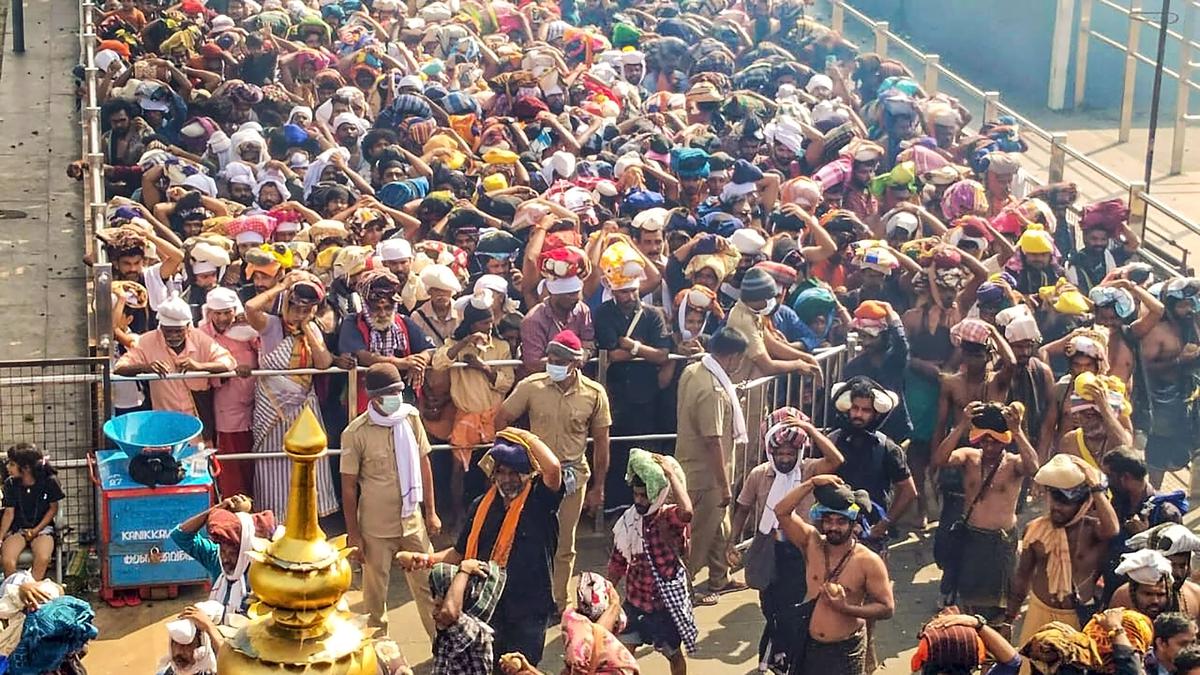
NSS calls for urgent action to ease crowding at Sabarimala
The Hindu
Even as the government sought to reassure the public about the crowd management measures at Sabarimala, the Nair Service Society expressed concern over the situation on the holy hillock
Even as the government sought to reassure the public about the crowd management measures at Sabarimala, the Nair Service Society on Wednesday expressed concern over the situation on the holy hillock.
In an official statement, G. Sukumaran Nair, general secretary, urged the government to take immediate action to restore the situation. He emphasised the need for the government to assign competent and experienced officers to address the ongoing issues.
“By appointing capable and efficient officials at Sabarimala, the problems faced by devotees can be effectively resolved. The government and the Travancore Devaswom Board should take necessary action,” he said.
He attributed the chaotic situation at Sabarimala to mismanagement by the authorities. “The existing system in place fails to effectively regulate and control the flow of pilgrims ascending the holy 18 steps. In the past, approximately 90 pilgrims were able to ascend these steps every minute, but now this number has dwindled to 50-60 pilgrims a minute. This is the main reason for the rush that we are witnessing today,” he said.
While the pilgrims were made to rely on KSRTC buses to reach Pampa, these buses were often crowded and charged exorbitant fares. The lack of adequate number of buses also contributed to the congestion at Nilackal. The absence of proper parking facilities forced vehicles to stop en route leaving devotees, including children, without access to basic necessities.
“It is crucial to establish parking facilities for small vehicles in Pampa, which will effectively mitigate congestion,” he pointed out.





















 Run 3 Space | Play Space Running Game
Run 3 Space | Play Space Running Game Traffic Jam 3D | Online Racing Game
Traffic Jam 3D | Online Racing Game Duck Hunt | Play Old Classic Game
Duck Hunt | Play Old Classic Game











